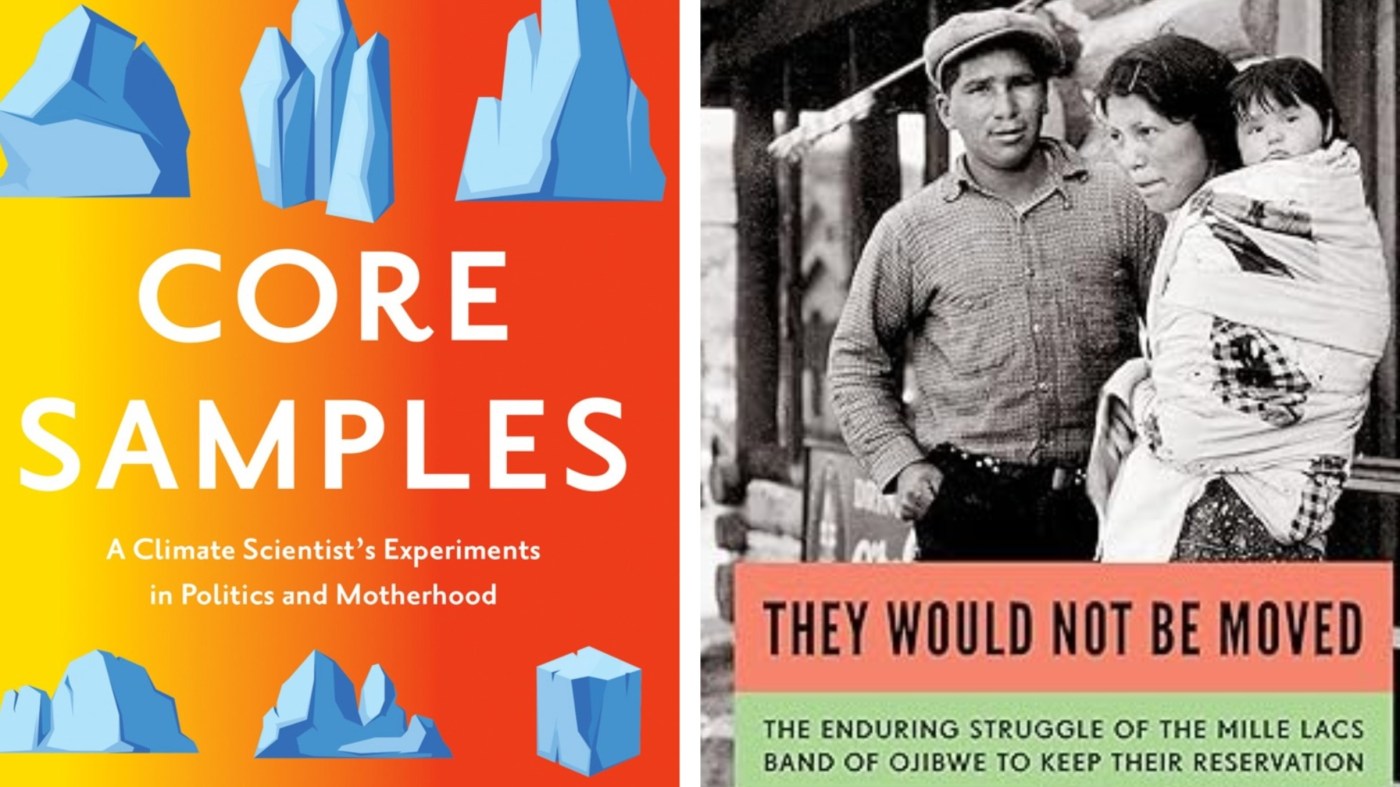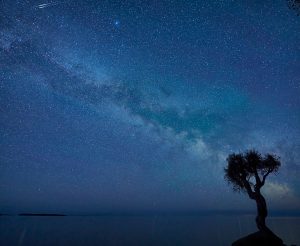
Readers and writers: Unique looks at the fights for land, and against climate change
Nonfiction about ways to deal with climate change and Minnesota Native Americans fighting decades to keep their land are in the spotlight today from two authors who will launch interesting books this week.
(Courtesy of University of Minnesota Press)
“Core Samples: A Climate Scientist’s Experiments in Politics and Motherhood”: by Anna Farro Henderson (University of Minnesota Press, $18.95)
Our climate crisis is not just a technical challenge. It is a human and cultural problem. To build public will, and participation, we need language that makes sense of the rapid rate and profound scale of environmental change. We need to see ourselves in relationship with our environment — and with each other. We need stories to integrate the impacts of environmental changes on our lives and to share what these mean with each other. Stories are how we shape and change culture. — from “Core Samples”
With the devastation of hurricanes Helene and Milton, Minnesota climate scientist Anna Farro Henderson’s new book could not be more timely. We are now living what she and her colleagues have been trying to warn us about for years.
Henderson thought she was going to get a tenured professor’s position after years of research, including pushing a tube into the layers of mud and sediment at the bottom of lakes, covering herself in water and muck to bring up core samples. She took those findings into the lab, learning how climate change affected those lakes through the centuries. But scientific papers weren’t helping people understand, or persuading politicians to do anything about, the effects of climate change. So she left academia to make the topic more accessible by personalizing her experiences in the 20 literary essays in her book. It is stories, she realized, that pull us together.
Anna Farro Henderson (Craig VanDerSchaegen / University of Minnesota Press)
After researching in far-flung places such as the Juneau Ice Field in Alaska and a meteor crater in Ghana, Henderson writes about entering the bewildering world of politics, working as an environmental policy adviser to former Minnesota Sen. Al Franken and former Gov. Mark Dayton. Franken hired her when she was six months pregnant and her stories of balancing committee hearings with pumping breast milk are sometimes hilarious, especially when her pump won’t work. One chapter is titled “Congressional Lactation Diary.”
Henderson thought she’d get things done in politics, but she soon realized moving bills through Congress and a state legislature was a long game. She liked working for Franken and Dayton (in whose administration she was known as “water czar”) and was impressed by their commitment to a clean environment.
After Henderson and her husband, Dan, welcomed their second son, she opted to spend more time with her family in St. Paul. Now she is a fellow at the Institute on the Environment at the University of Minnesota, teaches at the Loft Literary Center and works in climate advocacy.
Henderson follows in the footsteps of Bill McKibben, who warned us way back in 1989 about environmental destruction in his bestselling “The End of Nature.” This is what he says about Henderson’s book: “…a remarkably honest book — and therefore funny, moving, and eminently worth reading. (The author’s) deep encounters with Big Science, and Big Bureaucracy will help you understand why progress on matters of life and death can be so maddeningly slow, her encounters with herself may help you figure out how to live your own life.”
Henderson will launch “Climate Change” at 6:30 p.m. Wednesday at Open Book, 1011 Washington Ave. S., Mpls., in conversation with Minnesota House Speaker Melissa Hortman. There will be live music and interactive public art. Free; registration required at z.umn.edu/102324.
(Courtesy of the Minnesota Historical Society Press)
“They Would Not Be Moved”: by Bruce White (Minnesota Historical Society Press, $29.95)
It is impossible to overstate the importance of Bruce’s testimony and written contributions to our legal battles. In federal Indian law, the US Supreme Court has developed “canons of construction,” or rules, that the courts are required to follow whenever analyzing a treaty. One of these rules is that treaties must be interpreted as the Indians would have understood them at the time the treaty was signed… This painstaking effort is what Bruce White has undertaken for our people for over three decades. His research and testimony laid a critical foundation for all the litigation victories we would achieve in federal court over those years. — Melanie Benjamin, chief executive, Mille Lacs Band of Ojibwe, 2000-2024, in her foreword to “They Would Not Be Moved”
The Treaty of 1855 granted the Mille Lacs band of Ojibwe 61,000 acres along the south shore of Lake Mille Lacs to be their permanent home. Soon white entrepreneurs arrived and urged the people to move, and some did. But the Mille Lacs Band refused to comply, using the courts through generations to keep their rights to the land. That’s why they are known as “the non-removeable band” and why this book is subtitled “The Enduring Struggle of the Mille Lacs Band of Ojibwe To Keep Their Reservation.”
Bruce White (Courtesy of the Minnesota Historical Society Press)
The tribe was helped in their long legal struggles by Bruce White, who has dedicated more than four decades to researching Native history in Minnesota and North America. He has written expert reports used in court cases testing treaties and the application of laws relating to Native people. His report in the 1994 Mille Lacs hunting and fishing case was quoted by U.S. Supreme Court Justice Sandra Day O’Connor in her 1999 majority opinion upholding the rights of the Mille Lacs Band to hunt and fish in the ceded area of the treaty of 1837, prior to the 1855 agreement.
“They Would Not Be Moved” traces the Band’s history of defending their sovereignty and stewardship against loggers and settlers who illegally claimed parcels of the Band’s landholdings with no interference from government. White discovered that some neighbors and Mille Lacs County wanted the Band gone, but he found local newspaper accounts showing some nearby communities supported the Mille Lacs Native people.
White writes clearly, giving readers enough information to understand legal arguments without getting bogged down in details. He ends his story of strong-willed people with a telling comparison:
“As told earlier, Band leaders traveled to St. Paul in December 1862 to meet with their Indian agent. While in St. Paul these men were stoned in an attack by German immigrants who assumed they were Dakota. The leaders were also refused rooms in any of the city’s hotels. One hundred and sixty years later, in 2013, the Mille Lacs Band purchased two downtown hotels; it was reported that these investments encompassed half the available hotel rooms in the city.” (The Band owns the InterContinental St. Paul RiverFront hotel and the DoubleTree by Hilton.)
White, who lives in St. Paul and is a Minnesota Book Award winner, will launch his book at 7 p.m. Friday at the Mille Lacs Indian Museum and Trading Post in Onamia.
Related Articles
What to know about Han Kang, winner of the 2024 Nobel Prize in literature
10 scary books you need to add to your Halloween reading list
How Nicholas Sparks drew on the Bible for new novel ‘Counting Miracles’
Readers and writers: Mystery, history, and a fictional town you’ll delight in
Literary pick for Oct. 13: 24th Twin Cities Book Festival

